Beating the shortage of skilled workers in switchgear manufacturing
Digital from planning to the shop floor
UNTHA e-technology GmbH plans and produces around 1,000 control and switching systems every year, around half of which are for mobile recycling machines. End-to-end digitalisation, from planning to the shop floor, has enabled the switchgear manufacturer to reverse the workflow in switchgear manufacturing. Thanks to automated machining and wire assembly together with digital support for manual work processes, UNTHA e-technology was able to reduce implementation times and increase quality at the same time, despite also relying on the help of auxiliary staff. Written by Peter Kemptner
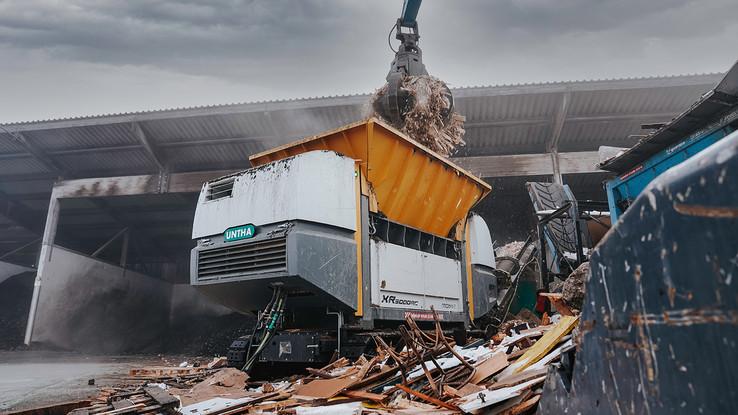
UNTHA e-technology GmbH, based in Golling an der Salzach (Salzburg, Austria), is an automation and switchgear manufacturer founded in 1974. © UNTHA shredding technology GmbH
"Our job is to implement efficient solutions for our customers," says Felix Grünwald, outlining the role of the control and switchgear manufacturer UNTHA e-technology GmbH in Golling an der Salzach (Salzburg, Austria).
Since completing his vocational training in 2001, he has worked in several areas of the company, from enclosure assembly to engineering and programming all the way to commissioning. Today he is the company’s Managing Director.
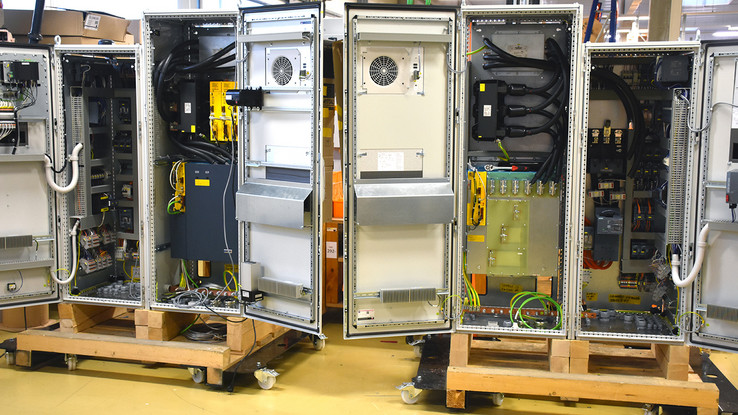
The automation and switchgear manufacturer UNTHA e-technology GmbH completes over 1,000 switchgear projects every year, around 50% of which are for the main owner UNTHA shredding technology GmbH. © Peter Kemptner
Control and switchgear systems for the world
The 80 or so employees of the company develop and produce around 1,000 control and switchgear systems each year in accordance with all the relevant international standards and regulations, primarily for special machines. UNTHA e-technology’s scope of services includes electrical planning and control programming as well as the manufacturing, cabling and assembly of enclosures.
More than half of the plants are designed for the shredding machines that UNTHA shredding technology GmbH produces in nearby Kuchl. The plants must therefore also meet the highest standards in terms of durability and mechanical load.
Until the takeover by its most important customer at the end of 2022, UNTHA e-technology was part of SW Automatisierung GmbH, which was founded in 1974. Now also an important customer, it has been concentrating on the construction of highly automated production lines and machines since it was split off. One example is the Wire Terminal, which is developed and produced by SW Automatisierung and marketed exclusively by Rittal worldwide.
Efficient plants, manufactured efficiently
UNTHA e-technology focuses on improving efficiency and cost-effectiveness not only for its customers, but also within its own company. For many years, the company has been competing with numerous established market players for the skilled specialists that it needs and has been feeling the effects of the shortage. UNTHA e-technology has therefore always employed auxiliary staff in production.
"Expanding their areas of application and thus freeing up the existing highly qualified specialists from repetitive tasks was one of the main motives for our efforts to improve processes in switchgear manufacturing," explains Felix Grünwald. "Another was the increasing effort required for training and master data maintenance in the various software systems for electrical system design."
Software standardisation in engineering
To overcome these disadvantages, UNTHA e-technology decided some time ago to curb its software diversity. The decision was made in favor of EPLAN products, although EPLAN Electric P8 had already been used before, but was by no means the leading system. “The decision was made primarily because of the database structure of the EPLAN platform, in addition to its broad acceptance in the market,” recalls Felix Grünwald. "This makes it easy to use the data in many other areas of the company."
Since the reorganisation of electrical system design in 2016, the only products in use, besides the ERP software, are those from the EPLAN platform. To avoid the risk of carrying over defects and errors from previous plans, UNTHA e-technology decided not to transfer existing data. The electrical planning engineers rebuilt the EPLAN database from scratch in just under two years of work.
To do this, they extensively used macro technology to maximise the reusability of modules that had been designed once. This preparation also makes it easier to automate engineering work at a later stage with configuration programs such as EPLAN eBuild or EPLAN Engineering Configuration (EEC).
Broadly defined digitisation
At UNTHA e-technology, the use of EPLAN software is by no means limited to engineering. "Around three quarters of our employees use EPLAN products constantly in their work," estimates Felix Grünwald. "We use this manufacturer's software to digitalise the entire production process."
This requires a rethink in engineering, because every piece of information that is needed later must be available in the electrical diagram. This is why the engineering department uses EPLAN Electric P8 and EPLAN Fluid as the main products for creating circuit diagrams. With the 3D design software EPLAN Pro Panel, the electrical planning engineers create the digital twin of the respective control or switchgear system.
The digital twin contains all the information that EPLAN Pro Panel derives from the arrangement of the electrical components and the connections between them. This data serves as the basis for switchgear manufacturing that features a high degree of automation. Furthermore, using worker assistance systems in many areas of production also makes it possible to use less-qualified employees.
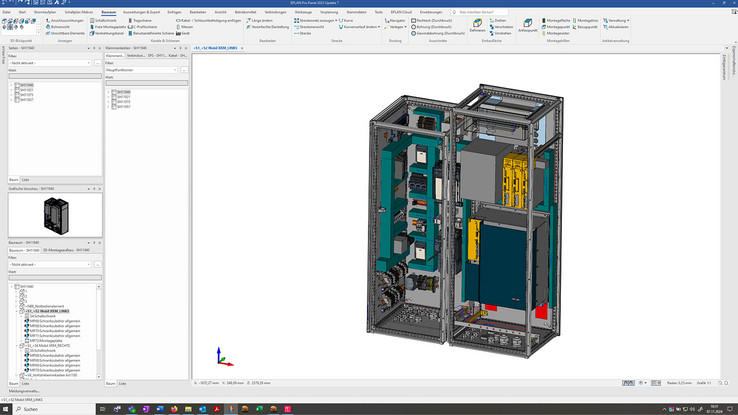
In addition to EPLAN Electric P8 and EPLAN Fluid, UNTHA e-technology GmbH primarily uses EPLAN Pro Panel for electrical planning to create the digital twin of the plants. © UNTHA e-technology GmbH
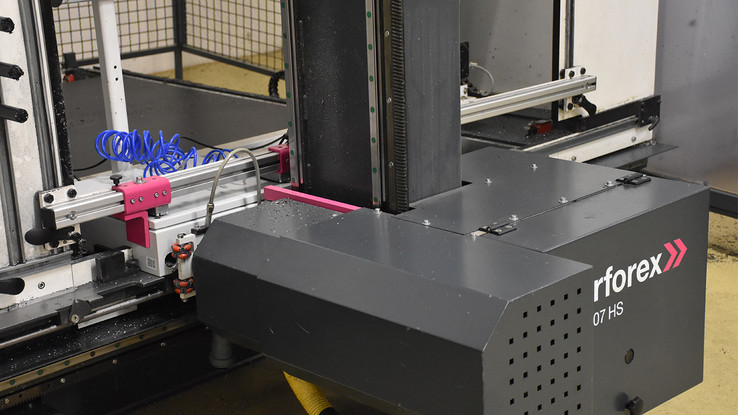
Based on the data from EPLAN Pro Panel, the automated machining of rear panels and housings is carried out on the Perforex BC 1007 HS, a CNC machining center from Rittal. © Peter Kemptner
Automatic sheet metal fabrication
The programs for the CNC drilling and milling center Perforex BC 1007 HS from Rittal are automatically derived from the data of the digital twin. This center automatically produces all the necessary holes, threads and cut-outs in the mounting panels, housing parts and enclosure doors. There is no need for programming on the machine, as it automatically acquires the data of the digital twin from EPLAN Pro Panel.
“With clean designs from EPLAN Pro Panel, the only work remaining related to machining is to clamp and remove the parts,” Felix Grünwald is pleased to report. "The machine delivers a clean result with consistently high quality and has paid for itself very quickly."
Reversing the method in the wiring
With conventional methods, almost half of the working hours involved in switchgear manufacturing go into assembling and routing the cables and wires. “We therefore started thinking early on about how to reduce the time required for wiring the enclosure and eliminate any errors that occurred in the process,” reports Felix Grünwald. "These considerations led to a complete reversal of the workflow, and to the development of the Wire Terminal."
Since 2019, UNTHA e-technology has been using this for the fully automated production of assembled wires based on data from EPLAN Pro Panel. The digital twin created there also provides all the information required for assembling the cables and wires. This allows the Wire Terminal to provide the wires in the right length and with the wire end treatment processing and labeling. After that, the only work left is to lay and mount the wires.
"The Wire Terminal can complete the wire assembly many times faster than any electrician and ensures consistently high quality," emphasises Felix Grünwald. "It provides the finished assemblies in an organised, easy-to-handle form for further preparation."
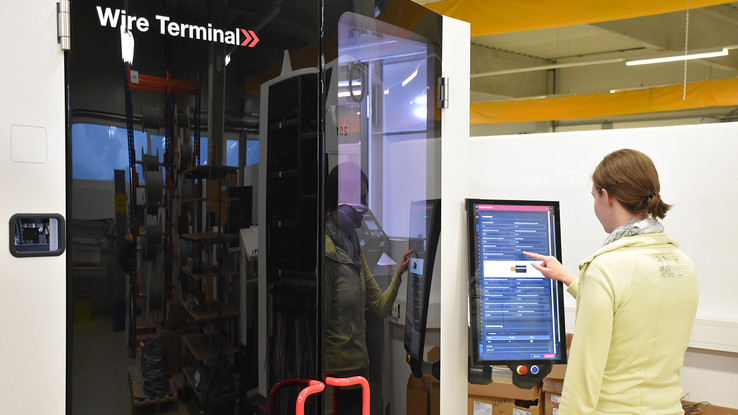
The data from EPLAN Pro Panel is also used for automatic assembly of the required wires in a Wire Terminal WT. © Peter Kemptner
Paperless enclosure manufacturing
UNTHA e-technology also uses a 100% digital workflow for manual mounting and wiring. Circuit diagrams are nowhere to be found at the mounting and assembly workstations. There, EPLAN eView gives employees full access to the digital twin of the respective plant on tablet computers or large monitors. Redlining and greenlining give them the opportunity to provide feedback to the design department for future improvements.
The availability of pre-assembled cables and wires with the right length, labeling and wire end treatment offers considerable advantages for routing on the mounting panel. At UNTHA e-technology, however, the use of data from the digital twin goes a significant step further. "At each wiring station, the employees get visual instructions for each work step from EPLAN Smart Wiring," explains Gerhard Baumgartner, Regional Sales Manager at EPLAN. "This enables UNTHA e-technology to almost completely eliminate errors, even during manual wiring."
As EPLAN Smart Wiring has proven to be outstanding, similar equipment is also planned for installing the components on the mounting panels. As of 2025, employees there should be able to work just as comfortably with EPLAN Smart Mounting.
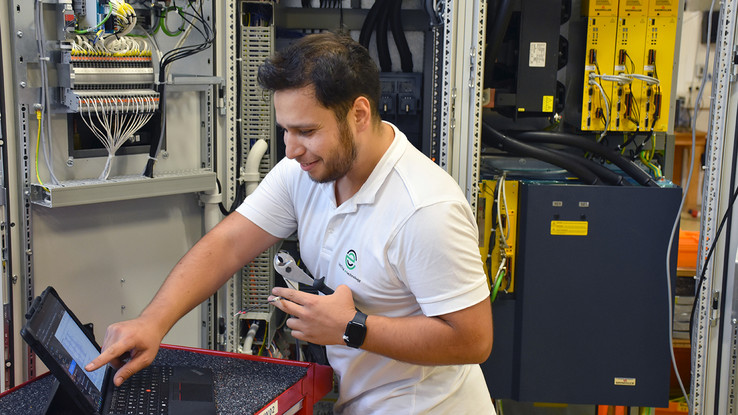
EPLAN View also clears up any confusion when the wiring in the enclosure is installed. © Peter Kemptner
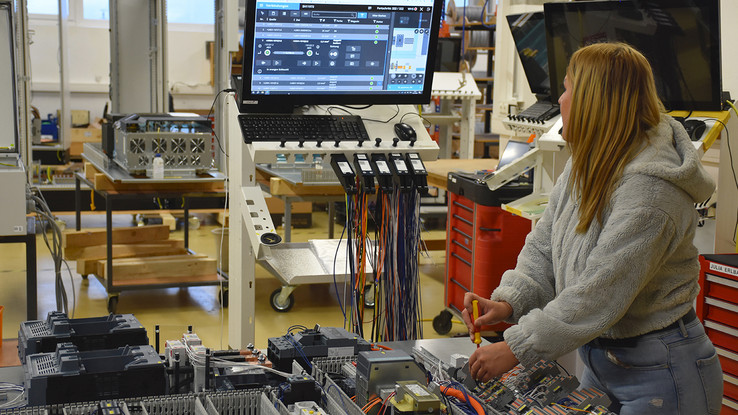
Thanks to EPLAN Smart Wiring, it is possible to use fewer highly qualified employees to wire the equipped mounting panels, while ensuring a high level of quality. © Peter Kemptner
Less time required, higher quality
The investment in the Rittal machines and Eplan software as well as the changeover in engineering, including the creation of a new macro catalog, have paid off. This applies to automated machining and wire assembly on the Rittal machines as well as to the digital support of manual work in switchgear manufacturing, where UNTHA e-technology employs highly qualified specialists, trained workers and vocational trainees in equal proportions.
A benchmark test conducted in mid-2024 provides the proof. Two teams had to wire the same switchgear. One of them consisted of experienced electricians who could use a printed circuit diagram as the basis for their work. In the other team, trained workers used the current methods and software tools described above. "This team completed the task in a third of the time," confirms Felix Grünwald, adding the almost unbelievable result: "What's more, the enclosure we manufactured turned out to be practically flawless."
"End-to-end digitalisation from planning to the shop floor enables us to achieve consistently high quality with short implementation times, no matter how large or complex the switchgear is," summarises Felix Grünwald. "It makes us a little less dependent on the availability of scarce specialists and improves the scalability of our plants."
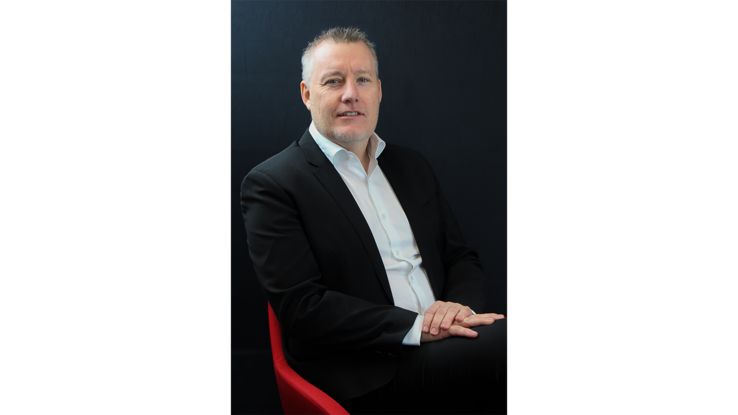
"The employees at the wiring stations get visual instructions for each work step from EPLAN Smart Wiring. This means that UNTHA e-technology can almost completely eliminate errors, even during manual wiring."
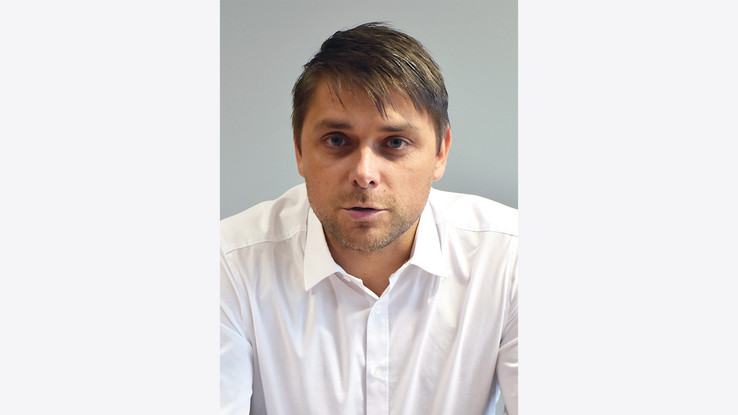
"End-to-end digitalisation from planning to the shop floor enables us to achieve consistently high quality with short implementation times and makes us a little less dependent on the availability of scarce specialists." © Peter Kemptner


